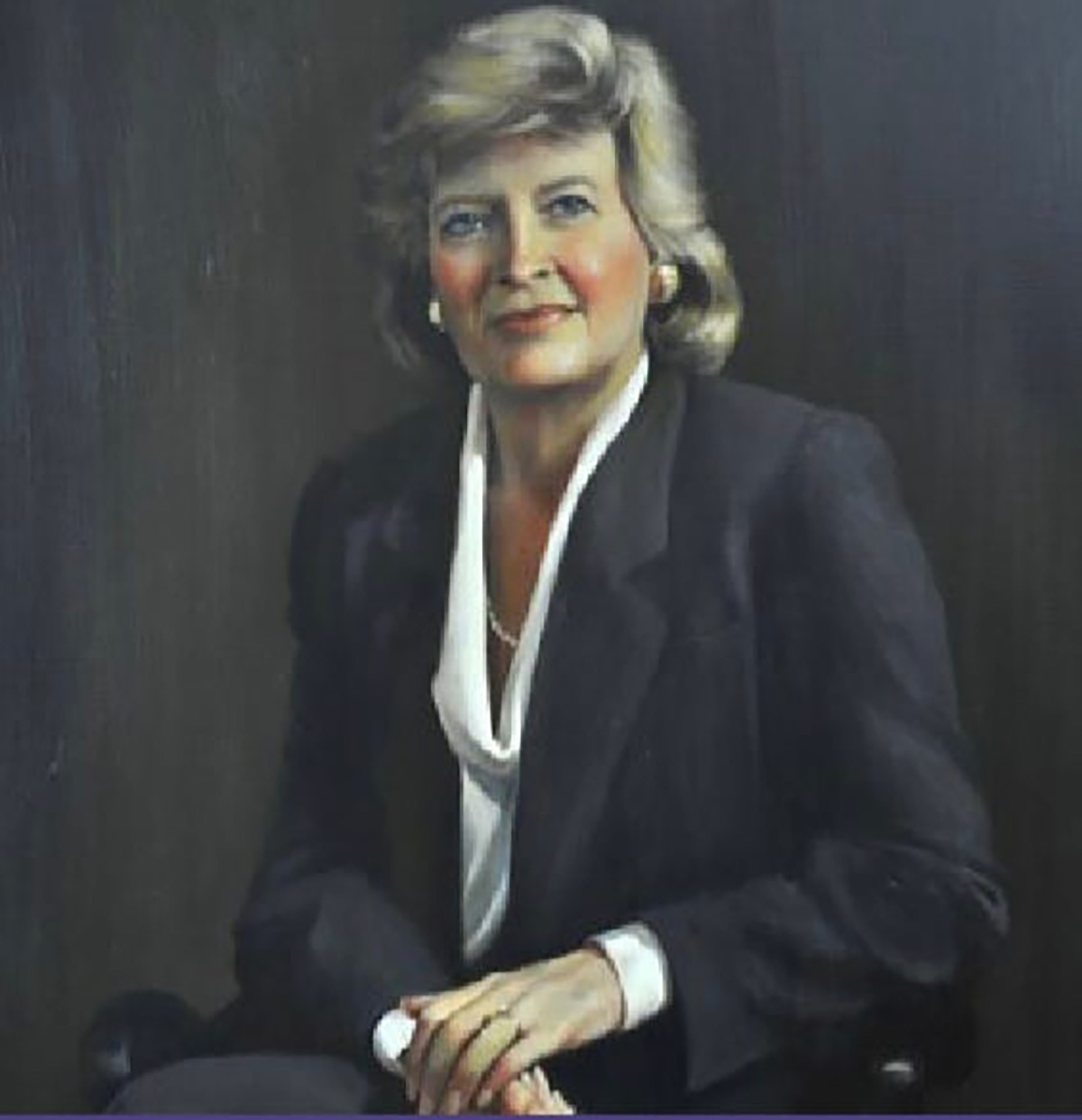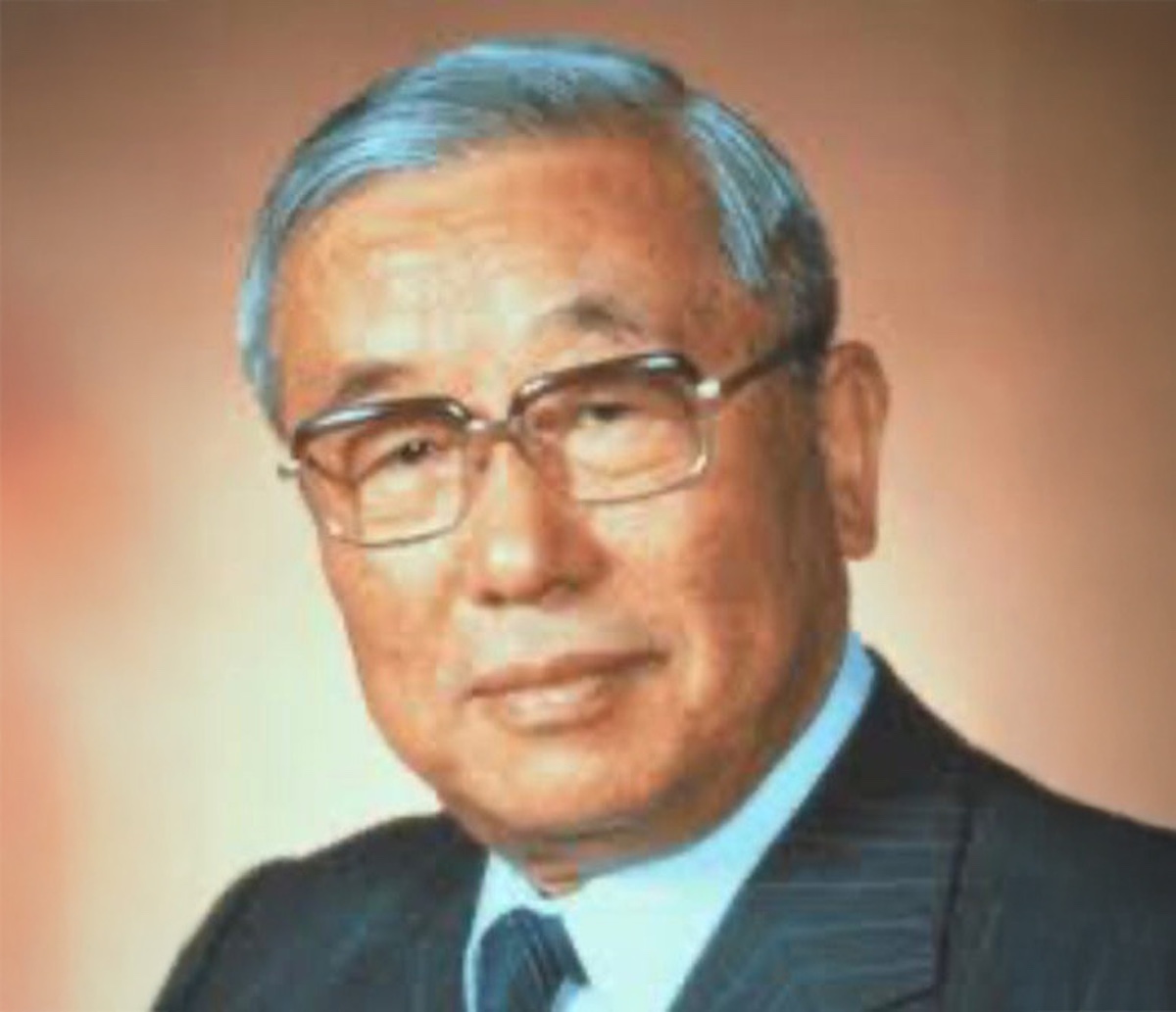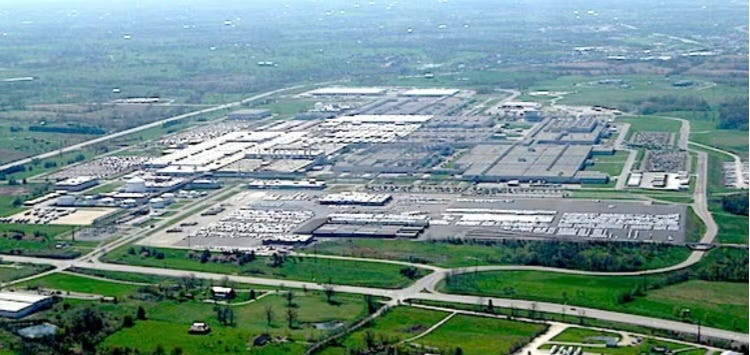Former Kentucky Gov. Martha Layne Collins died on Nov. 1, at age 88. Gov. Collins was a woman of firsts. She was the first — and only — woman thus far to serve as Kentucky’s governor, and was in office from 1983 to 1987.
Among a long list of accolades, one stands out: she negotiated the 1985 deal that brought Toyota’s first standalone plant to the United States.
[Ed Note: Following Collins’ passing earlier this month, Micheline Maynard, an award-winning journalist and author who covered the industry as the Detroit bureau chief for The New York Times, wrote this piece earlier for her Substack Intersection: Everything That Moves, which you can subscribe to here. We’re reprinting it here with permission.]
Forty years after the plant was announced in December 1985, the deal might be best known from newspaper clippings and TV footage, except for a fascinating set of oral histories.

They can be found online in the William H. Berge Oral History Center at Eastern Kentucky University. They were recorded in 2001 to document her administration, and include interviews with Collins administration officials as well as the late governor.
I discovered them recently when I was looking for background about Collins.
The recordings lift the veil on what has often been a mysterious process: how major companies choose sites for investment, and the lengths that states go to in order to land them.
Even now, there is a perception that Collins began courting Toyota in early 1985, the same year that Toyota announced that it had chosen Georgetown, Kentucky as its location.
But the oral histories make clear that the process began before that. The site that Toyota chose wasn’t the first one that Kentucky proposed for the factory. And before the deal was concluded, Kentucky officials fretted that they would lose the plant to a Southern neighbor.
Setting The Scene
First, a little background. In 1982, as Detroit companies suffered a then-historic decline in auto sales, the Reagan administration negotiated a Voluntary Restraint Agreement with Japan. It limited the sale of Japanese vehicles in the U.S., except for those it built here.
Japanese companies entered joint ventures with their U.S. counterparts — Toyota with General Motors at New United Motor Manufacturing Inc. (NUMMI) in Fremont, Calif., Ford with Mazda in Flat Rock, Mich., and Chrysler with Mitsubishi in Normal, Ill.
Honda, meanwhile, decided to open its own plant in Marysville, Ohio, in 1982. Nissan followed with its first U.S. factory in Smyrna, Tenn., in 1983. That meant Toyota, the biggest carmaker, was in the spotlight to launch production here.
But as anyone who has ever watched the company knows, Toyota never rushes.
“When we first started calling on Toyota, they had not said they were going to come to North America, other than their plant that they had in California,” Collins said in the oral history interview. “We just started going and calling on them.”
Unusual Deference
At the time, books and seminars providing advice on Japanese culture were all the rage. I remember reading some of them before my trips, but Collins said she did not take any extra steps to prepare herself for meetings with Toyota.

“I did not go to school to learn how to work with the Japanese. I did not take any courses, as some of the other governors did. I did not learn how to exchange a business card or what to do or what not to do. It kind of came naturally.”
Her gender was an advantage, she said. “I would go to Japan and be the only female governor over there. So they never got me mixed up with the others.”
Possibly because she was female, Collins was treated to hospitality that many visiting dignitaries never received. When she eventually met Toyota chairman Eiji Toyoda (above), he brought his wife along.
“The Japanese did not bring their families into their business. It’s totally separate. You knew there was something special there when they bring their families,” she said.
Collins also shared a philosophy that Toyota has regularly espoused during its history: customer service. She did not want the Toyota officials to feel she was demanding the investment or expected it in return for the time her staff was putting in.
“They were my customer. I was providing a service,” Collins said.
In courting Toyota, much of the day-to-day work was done by a team headed by Ted Sauer, executive director of the Kentucky Commerce Cabinet’s Office of International Marketing.
Sometimes, Collins recalled, she charged Sauer with traveling to Japan to deliver requested information in person — something other states were not doing.
Modifications In Secret
While on a trip to Japan, Sauer learned that Toyota was unhappy with the 500-acre site that the state proposed. That set off a scramble to assemble purchase options on another 500 acres. Now, any economic development agency has that information at its fingertips.
But back then, “We didn’t have the experience to go out to get the options, and we didn’t want people to know,” Sauer recalled.
The state enlisted help from Norfolk Southern Railway, which had the ability to make confidential land deals. Then, word came that Toyota had increased its request to 800 acres, and the Kentucky team had to find more land.
“From day one we knew this was going to be a much larger project than the original specifications,” Sauer said. “It exceeded our expectations.”
Said the governor: “This was going to be BIG.”
While choosing Kentucky now looks like a foregone conclusion, Collins and Sauer said it was not at the time. “The consultants rated Tennessee better than us. They rated Ohio better than us,” he said. Ohio – where Honda was located – “was head and shoulders above us in skills and services.”
After the months of conversations, site visits, and trips to Japan, the finalists boiled down to Tennessee and Kentucky. The Kentucky group hoped their site would be more attractive because of its proximity to Lexington, the presence in the area of several universities, and access to Cincinnati’s international airport, about an hour away.
The Toyota site selection team chose to visit Tennessee first, which gave Collins time to set up a celebration for the visitors from Japan.
She knew American folk songs were popular in Japan, so she arranged for singers from My Old Kentucky Home, a historic site in Bardstown, to sing Stephen Foster tunes at dinner. She ordered Baked Alaska, which was decorated with sparklers for an exciting touch. She set up an after-dinner fireworks display at the state capitol.
Sitting At The Airport
Then, she rode to the Lexington airport to meet the team in person. But the Toyota planes, two private jets, were late. Her staff tried to convince her to return to her office, but the governor killed time greeting passengers as if it were a normal part of her day.
“I was just meeting people in the airport, talking to them, welcoming them to Kentucky,” she recalled.
An hour stretched into two, and Collins said she began to wonder if the Toyota team had chosen Tennessee and was going to ghost her. “I’m thinking they are going to say they are not coming, but I didn’t think they’d do that,” she said.
Collins kept telling herself, “You’re not going to look nervous. Everything is under control. But your mind is constantly thinking, what if? Some people do this with a dinner party at their home. They get uptight. What if they had made a deal and that was what was taking so long?”
Finally, the private jets arrived, two and a half hours late. Collins knew the Toyota officials were rattled by being so far off schedule. She had learned in Japan that promptness mattered. Often, during her trips, the Kentucky team would arrive too early and would drive around in the car to arrive on time.
But Collins did her best to soothe the frazzled Toyota group. On the ride from the airport, she calmly pointed out local landmarks. “Now, here’s Keeneland, here’s Calumet,” the big horse farm across from the racetrack. She remembered that the interpreter had trouble keeping up with her patter.
Upstaged At The End
To her relief, the welcome dinner went off smoothly, and in December 1985, Toyota planned to announce that Kentucky had won the plant. But their announcement was upstaged by U.S. Sen. Mitch McConnell.
According to the Lexington Herald-Leader, he slipped out of a dinner at the Watergate Hotel where Toyota officials, as a courtesy, informed him, then-Sen. Wendell Ford and others about the decision, and began calling the news media.

That night, TV stations reported that Kentucky had won the plant, followed by newspaper headlines the next morning. Some people in the administration were furious that Collins and her team did not get the credit.
But years later, Sauer was sanguine. “Toyota had to pay attention to national politics. There’s a bigger picture for them than this plant in Georgetown,” he remembered.
At the time, “The Japanese were real worried about the labor force in the United States. Tennessee was a right-to-work state. Kentucky was not. Anyone would be excited to get 3,000 jobs.”
Beyond Imagination
From the 1985 announcement of an $800 million investment, Toyota has invested more than $11 billion in facilities in the Georgetown area. It employs roughly 10,000 people.

On Monday, it announced its latest U.S. investment of $922 million across its plants in Kentucky, Mississippi, West Virginia, Tennessee, and Missouri, to add 252 jobs and boost production of hybrid electric vehicles.
If you drive through what was once rolling countryside where Toyota is now located, you see plants making cars, engines, plastics, and dies. The 800-acre site has grown to 1,300 acres.
Collins was right: it is big — even bigger than she might have ever dreamed.
[This piece was republished with permission from Micki’s excellent Substack Intersection: Everything That Moves, which you can subscribe to here.]
Top graphic images: Toyota









I can recommend checking out more from the William H. Berge Oral History Center. A lot of the interviews are conducted by EKU students and it’s a unique way for them to contribute to the preservation of history. Go Colonels!
Speaking of oral history, I’ve heard something I have been unable to verify but thought might be interesting to mention as it relates to the site selection.
Georgetown was selected because of the proximity to other cities like Lexington, Louisville, and Cincinnati, but also because it is located right off I-75 and near the interchange with I-64. London, Kentucky, was also under consideration because it too was on I-75 and intersected with Kentucky Route 80.
Now for the part I haven’t verified. Toyota recognized that a significant portion of their workforce would be native to the area they selected, so one of their considerations was to compare the population they would be employing. They requested records from local schools in Georgetown and London. Their finding was that students in Georgetown had better attendance rates than London and reasoned it was indicative that Georgetown’s populace would be more reliable as employees.
Probably not the deciding factor, but it would have worked in Georgetown’s favor nonetheless.
One of my cousins worked there. He loved it and the benefits.